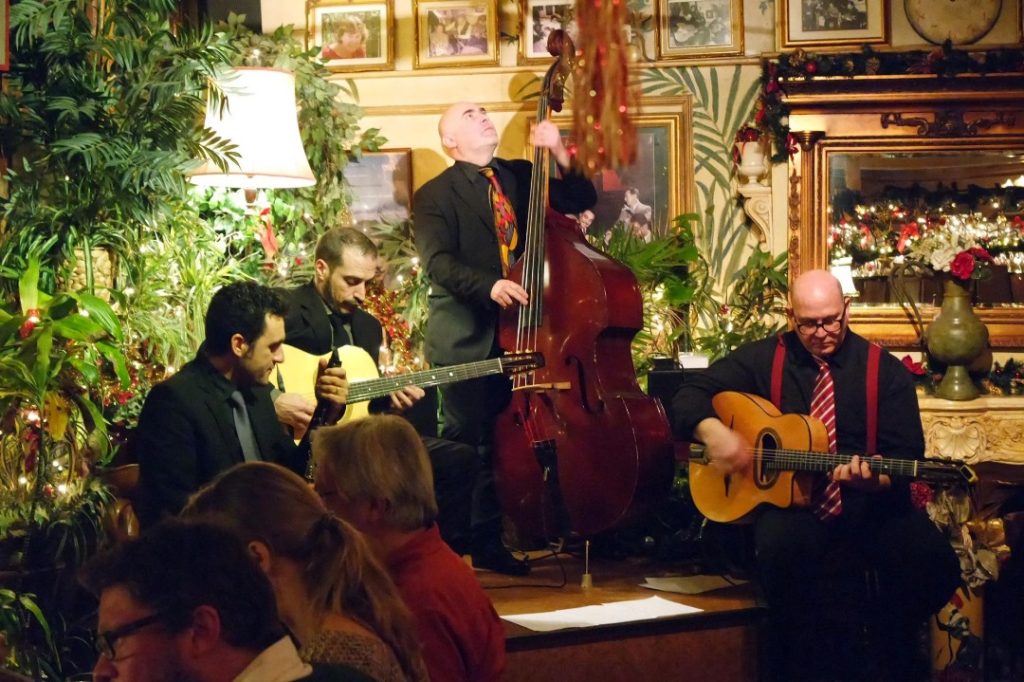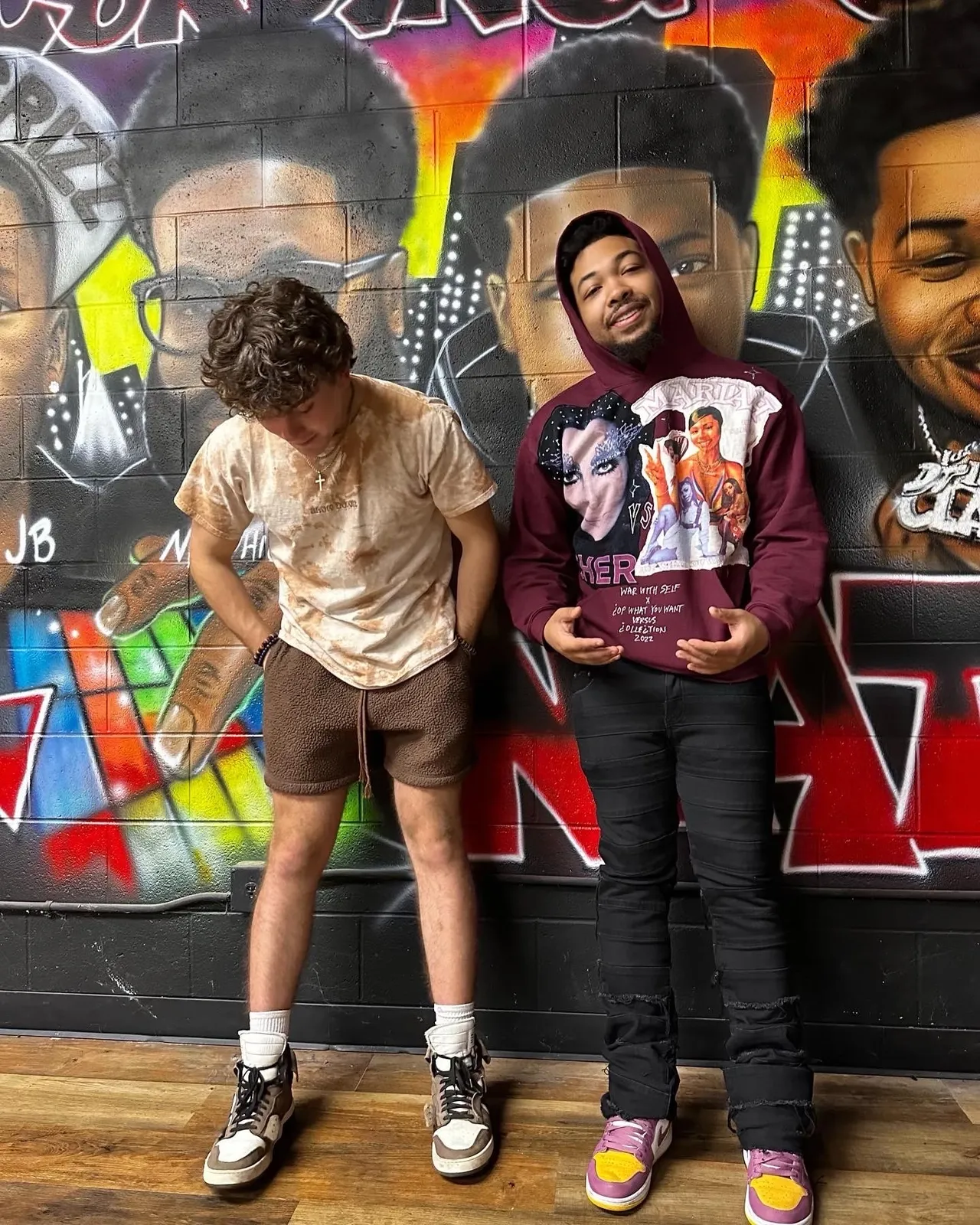Gianfranco Malorgio’s journey into the world of music reads like an artist in pursuit of sonic perfection. Nestled in Rome, Italy, Gianfranco’s early years were marked by his fascination with the classical guitar. His passion led him to study the instrument rigorously, honing his craft under the guidance of Maestro Giovanni Viola at the prestigious Morlacchi Conservatory in Perugia. His passion for music evolved as he delved into Gypsy Jazz, influenced heavily by the legendary Django Reinhardt. This newfound love led him to form “Hot Club Roma” in 2005, where he became the rhythm guitarist. The band, devoted to Manouche music, quickly gained recognition, performing in prestigious clubs across Italy and at various festivals.
Their debut album “Swing From Rome” was released under Wide Sound Records, firmly establishing their place in the Italian jazz scene. Throughout his career, Gianfranco has collaborated with renowned Gypsy Jazz musicians, including Dorado Schmitt, Stochelo Rosenberg, and Noè Reinhardt. His talent also extended into film music, contributing to the award-winning soundtrack of “La Casa Sulle Nuvole” in 2009, which was recognized as the best Italian film soundtrack of the year. Malorgio’s versatility shines through in his numerous performances, from the Festival of Acri with Angelo Debarre and Dario Pinelli to the Villacelimontana Jazz Festival in 2009, where he accompanied Dorado Schmitt, one of the greatest living Manouche interpreters.
In 2010, Gianfranco furthered his creative output with the release of Django Mon Amour, collaborating with acclaimed violinist Tim Kliphuis. This project not only celebrated Reinhardt’s legacy but also introduced new compositions, blending traditional Manouche music with Italian popular songs. As artistic director, Malorgio organized the Villa Sarsina Gypsy Jazz Fest, highlighting his commitment to promoting Gypsy Jazz in Italy. His collaboration with musician and actor Giorgio Tirabassi to produce the theatrical production Django Reinhardt, the Three-Fingered Lightning (2012), which was devoted to Reinhardt’s life and music, marked a turning point in his career.

This show toured across Italian theatres and festivals, further cementing Gianfranco’s place in the jazz world. His band even performed in London’s famous Le QuecumBar, a significant venue for Django’s music. In recent years, Malorgio shifted his focus to composing music suited for film and synchronization, blending retro styles with modern soundscapes. His work, released under the Papilio label, is available on Spotify and YouTube, showcasing his evolution from a Gypsy Jazz guitarist to a versatile composer who seamlessly integrates various musical genres and eras.
Released on August 5th, 2024, “Dark Night” by Gianfranco Malorgio is an evocative journey through sound, merging his extensive experience in Gypsy Jazz with his burgeoning career as a composer of cinematic orchestration. Gianfranco takes a bold step forward with this single, showcasing his ability to transcend genres. A orchestral masterpiece, “Dark Night” blends bright and dark components to evoke a dreamlike condition that reflects the harmony between suspense and tranquility. Using synths, dramatic progressions, and vintage instruments, Malorgio creates an ethereal soundtrack that is at once nostalgic and energizingly contemporary.
The audio experience of Gianfranco Malorgio’s “Dark Night” takes listeners to a place where the lines between music and film are blurred. You can sense something more subtle than just notes and rhythms from the opening chord; this is a composition meant to simultaneously arouse suspense, emotion, and beauty. It’s as if Malorgio has composed a soundtrack for a film that exists solely in your mind. The opening sustained chords are both heavy and light, setting a tone that feels both astral and divine. The slow tempo is deliberate, creating a paradisiacal ambiance that draws you in, making you feel as if you’ve stepped into another world, where gloom and hope are perfectly balanced.
As the song progresses, the introduction of a deep, pounding drum base adds a layer of depth to the already intricate soundscape. This contrast between the solemn elegance of the slow tempo and the grounding weight of the bass is one of the most striking features of “Dark Night.” There’s a subtle brilliance in how Gianfranco creates this balance—neither element overpowers the other, and together they form a foundation that is rich, thick, and full of anticipation. It feels like you’re on the verge of something grand, and as the music unfolds, it doesn’t disappoint.
At the 1:00 mark, a gritty, chorded sound enters the mix, introducing a new level of complexity to the composition. This progression, layered alongside majestic piano melodies and thick strings, gives the song a transcendent quality. The sound is gritty yet refined, intense yet controlled, pushing the listener further into a state of heightened awareness. You can feel the piece evolving, taking on new dimensions, growing in intensity and grandeur. The slow tempo and these extra layers combine to produce a complex soundscape that seems both carefully planned and unplanned.
One of the most awe-inspiring moments comes at the 1:35 mark, where the full drum beat makes its entrance, accompanied by ethereal vocal melodies. This shift is transformative—it feels like the song has reached its apex, soaring with energy and emotion. The drums give the composition a midtempo rage that contrasts beautifully with the angelic vocals, creating a tension that’s palpable yet uplifting. It’s a moment where everything seems to come together in unison, a climax that leaves you speechless and wanting more.
Its unpredictable nature is what distinguishes “Dark Night” from other cinematic compositions. Unexpected but never abrupt changes occur as the piece develops and changes. Even though nothing that occurs could have been predicted, it all feels prevalent and as though it was intended to be. One of the most seductive things about the song is how you can’t help but wonder what will happen next and how it will always be better than you could have anticipated. Gianfranco has a remarkable talent at holding the listener’s attention and keeping them interested at every step.

The cinematic quality of “Dark Night” cannot be overstated. This arrangement and voyage make it feel as like it belonged in the epic film’s last scene, not just a song. Gianfranco creates a composition that is nearly mythological in scope by striking a balance between light and dark, optimism and misery. Every instrument and melody tells a part of the story, which is told entirely through sound. The composition’s emotional impact, rich instrumentation, and dynamic progressions all come together to produce a timeless and completely enthralling feeling.
“Dark Night” is a piece of art as much as it is music. By fusing orchestral arrangements, cinematic soundscapes, and Gypsy Jazz components into a single, unified masterwork, Gianfranco Malorgio has created something that defies genre conventions and expectations. A sublime musical experience is produced by the gradual build, the complex layering, the erratic development, and the last, breath-taking crescendo. This song is both haunting and lovely in equal measure, and it stays with you long after the last note. This is a work that really must be heard and felt.
For more information about Gianfranco Malorgio, click on the icons below.


